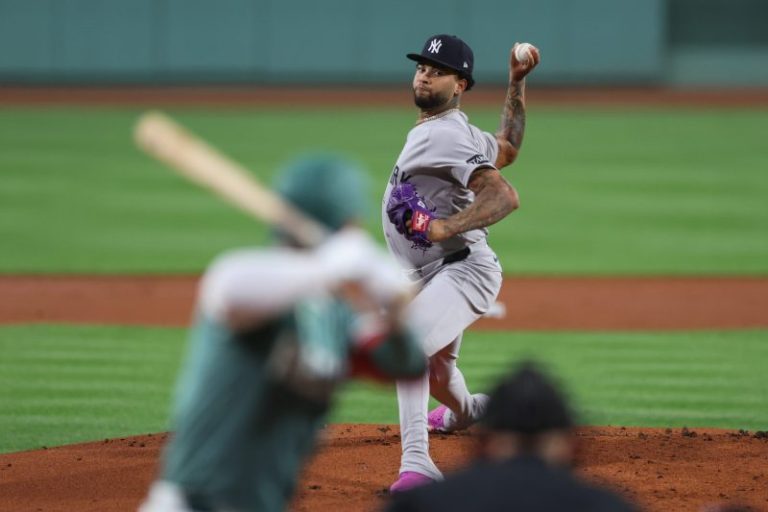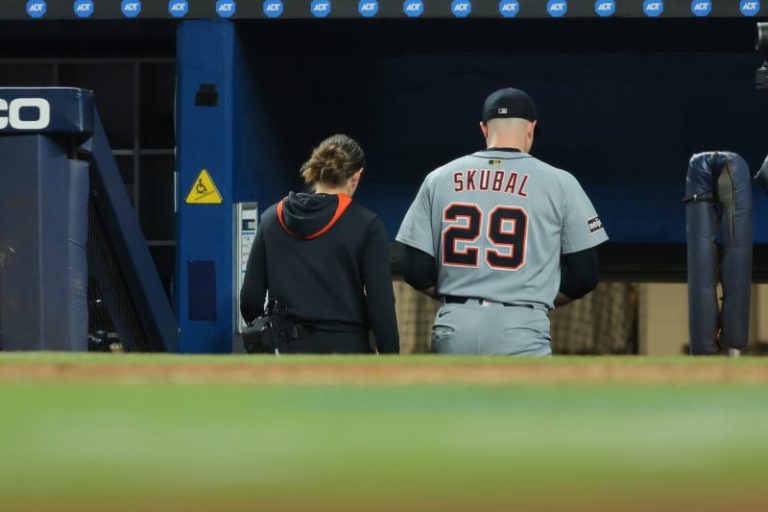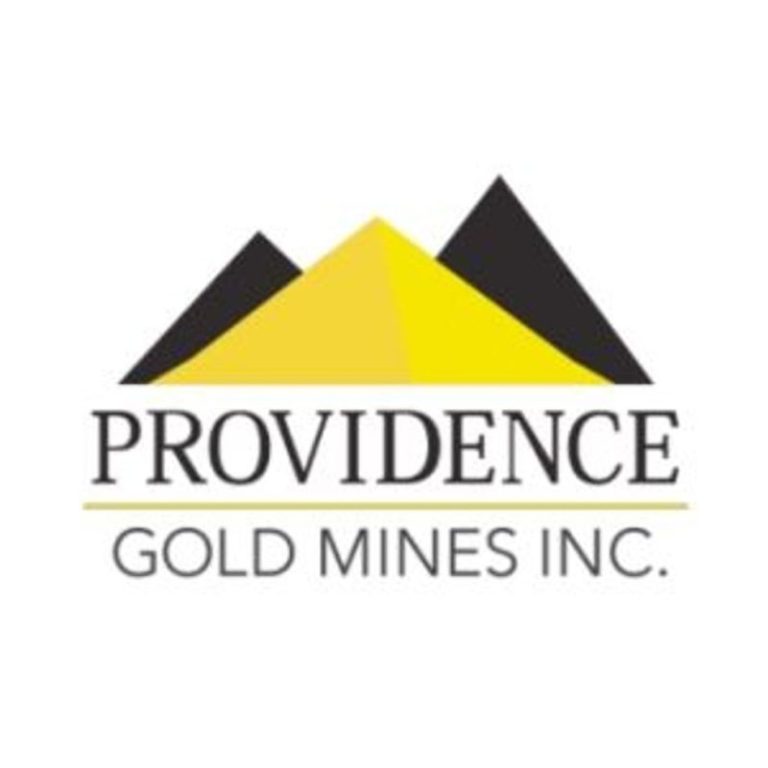Christopher Bell made it a clean sweep for Joe Gibbs Racing in the first three races of the 2025 NASCAR Cup Series playoffs.
Bell surged to victory Saturday night at Bristol Motor Speedway, taking the checkered flag after a blistering restart with four laps remaining in the Bass Pro Shops Night Race. Bell joined teammates Chase Briscoe, who won the playoff opener at Darlington Raceway, and Denny Hamlin, who won last weekend at World Wide Technology Raceway, in the Round of 12 of the NASCAR playoffs.
Bell took the lead in Turn 2 of the restart from Carson Hocevar and held off a hard charge from RFK Racing’s Brad Keselowski on the final lap to earn his first career victory at Bristol and his fourth of the 2025 season. Bell edged Keselowski by 0.343 seconds.
“We just know that any week, any given week, it could be us, and it hadn’t been us for a long time,’ Bell said of his victory Saturday night. ‘But Bristol, baby, tonight it’s us!”
Zane Smith finished third, Ryan Blaney fourth and Joey Logano fifth. Corey Heim, Hocevar, Alex Bowman, Briscoe and Ty Gibbs rounded out the Top 10.
The race concluded the first round of the playoffs and ended the championship hopes of four drivers. Bowman, Austin Dillon, Shane van Gisbergen, and Josh Berry were eliminated from the playoffs with the lowest points after three races.
The second round, which begins next Sunday at New Hampshire Motor Speedway, features 12 drivers still alive in the championship hunt: Bell, Hamlin, Briscoe, Blaney, Logano, Kyle Larson, Bubba Wallace, William Byron, Tyler Reddick, Chase Elliott, Ross Chastain and Austin Cindric.
The Round of 12 then moves to Kansas Speedway on Sept. 28 before concluding with an elimination race on the Roval at Charlotte Motor Speedway on Oct. 5.
NASCAR playoff standings entering Round of 12
Here are the updated NASCAR Cup Series playoff standings following Saturday night’s Bass Pro Shops Night Race at Bristol Motor Speedway as the field was trimmed from 16 to 12 drivers. Four more drivers will be eliminated from championship contention in three weeks at Charlotte Motor Speedway.
- Denny Hamlin, Joe Gibbs Racing … +26
- William Byron, Hendrick Motorsports … +24
- Kyle Larson, Hendrick Motorsports … +24
- Christopher Bell, Joe Gibbs Racing … +20
- Ryan Blaney, Team Penske … +19
- Chase Briscoe, Joe Gibbs Racing … +10
- Chase Elliott, Hendrick Motorsports … +5
- Bubba Wallace, 23XI Racing … +1
- Austin Cindric, Team Penske … -1
- Joey Logano, Team Penske … -2
- Ross Chastain, Trackhouse Racing … -2
- Tyler Reddick, 23XI Racing … -3
Christopher Bell wins NASCAR playoff race at Bristol
Christopher Bell took the lead on a restart with four laps remaining in the Bass Pro Shops Night Race at Bristol Motor Speedway and held off Brad Keselowski for the checkered flag. With the win, Bell automatically advanced to the Round of 12 of the NASCAR Cup Series playoffs.
Four drivers eliminated from NASCAR playoffs
Austin Dillon, Shane van Gisbergen, Alex Bowman and Josh Berry were eliminated from championship contention following Saturday night’s NASCAR Cup Series race at Bristol Motor Speedway, which trimmed the playoff field from 16 to 12 drivers.
Bubba Wallace crashes with 12 laps to go
Bubba Wallace hit the wall in Turn 3 while running in 22nd position on Lap 482 to bring out the caution. Brad Keselowski led a handful of cars down pit road for tires, while Carson Hocevar, Zane Smith and playoff driver Alex Bowman stayed out ahead of shootout to the finish.
Brad Keselowski takes the lead on Lap 450
Brad Keselowski, the 2012 NASCAR Cup Series champion took the lead in the Bass Pro Shops Night Race with 50 laps remaining at Bristol Motor Speedway. Carson Hocevar runs second, Zane Smieth third, Alex Bowman fourth and John Hunter Nemechek.
Two more playoff drivers clinch berths in Round of 12
William Byron and Tyler Reddick secured enough points to guarantee advancement to the second round of the NASCAR Cup Series playoffs. They join Chase Briscoe, Denny Hamlin, Kyle Larson, Bubba Wallace and Ryan Blaney in the Round of 12. Five more berths remain.
Denny Hamlin loses right front wheel, crashes
Denny Hamlin brought on the caution on Lap 384. Hamlin was battling with pole winner AJ Allmendinger for the 20th position when he appeared to lose his right front wheel one second before making contact with Allmendinger entering Turn 3. Both cars hit the wall and suffered major damage.
Hamlin also received a two-lap penalty for losing the right front wheel. Hamlin won the second playoff race last weekend at World Wide Technology Raceway to secure a spot in the Round of 12.
NASCAR Bristol race: Lap 364 update
Kyle Larson slowed on the track and spun into the inside wall between Turn 1 and Turn 2 after suffering a broken toe link following contact with Daniel Suarez while both battled for 25th. Larson has already clinched a berth in the second round of the playoffs.
Ricky Stenhouse Jr. spins, brings out caution
Rickey Stenhouse Jr. spun in Turn 1 after contact from Bubba Wallace on Lap 354 of 500 of the Bass Pro Shops Night Race to bring out the caution flag at Bristol Motor Speedway. Stenhouse was running in the 20th position, while Wallace was seeking to get to pit road before the contact.
During the caution, most of the leaders came down pit road for fuel and tires, though some teams replaced all four tires, while others opted to spend less time on service and just take two tires.
Denny Hamlin stayed out while other drivers pitted. He restarted on the front row alongside Joe Gibbs Racing teammate Chase Briscoe, who promptly took the lead from Hamlin.
Playoff driver Chase Elliott crashes out of Bristol race
Chase Elliott slammed into the outside wall head on in Turn 3 after John Hunter Nemechek made contact with the back of the No. 9 Hendrick Chevrolet on Lap 311. Elliott was running 10th at the time and was trying to squeeze into the bottom lane in front of Nemechek, who said he got rear-end contact from Denny Hamlin.
Elliott’s crew pushed the No. 9 Chevy behind the wall to try to repair the major damage but to no avail. Elliott was forced out of the race, and currently sits as the 12th and final driver positioned to make the second round of the playoffs … pending the final 180 laps of the race. Elliott currently leads teammate Alex Bowman by 23 points and Austin Dillon by 24 points in the playoff standings.
NASCAR Bristol Night Race Lap 300 update
Chase Briscoe leads the field on a restart with 200 laps remaining after a spin by Noah Gragson. Chris Buescher runs second, Bubba Wallace third, Ryan Blaney fourth and Christopher Bell fifth. All but Buescher are playoff drivers; Briscoe, Wallace and Blaney have already clinched spots in the second round of the playoffs.
Ryan Blaney clinches berth in second round of playoffs
Ryan Blaney, who won the opening stage of the Bass Pro Shops Night Race at Bristol Motor Speedway and finished second in Stage 2, became the fifth driver to advance to the Round of 12 of the NASCAR Cup Series playoffs. Seven spots remain open, while four drivers will be eliminated at the end of the race.
Ty Gibbs wins Stage 2 of NASCAR Bristol Night Race
Ty Gibbs, who has led a race-high 163 laps, outdueled Ryan Blaney to the start-finish line to win Stage 2 of the Brass Pro Shops Night Race at Bristol Motor Speedway. Blaney edged Gibbs to win the opening segment.
Alex Bowman finished third, Brad Keselowski fourth and Carson Hocevar fifth. Austin Cindric, Chris Buescher, Bubba Wallace, Zane Smith and Denny Hamlin rounded out the Top 10.
Daytona 500 winner William Byron, who had gone a lap down in the closing laps of Stage 2, received the wave-around to get back on the lead lap. Byron was running 19th, leaving half the field at least one lap down.
Shane van Gisbergen spins, bring out caution
Shane van Gisbergen spun out in Turn 3 from 33rd position with 12 laps remaining in the second stage to bring out the caution. All lead lap cars except Ricky Stenhouse Jr., who was running in the seventh position, made their way to pit road for fuel and tires. Ty Gibbs emerged as the leader after pit stops, followed by Alex Bowman and Brad Keselowski.
With his spin, van Gisbergen put himself in a must-win position to advance to the next round of the playoffs.
NASCAR Bristol Night Race: Lap 180 update
Ty Gibbs continues to lead the Bass Pro Shops Night Race at Bristol with 70 laps remaining in the second stage. Gibbs has led more than 120 laps in the race so far. Carson Hocevar has powered into the second position followed by playoff drivers Ryan Blaney and Bubba Wallace. Jon Hunter Nemechek runs fifth, and playoff driver Alex Bowman has rebounded from an early spin to drive up to the sixth position.
Kyle Larson, Bubba Wallace advance in NASCAR playoffs
With their finishes in the opening stage of the Bass Pro Shops Night Race, Kyle Larson, the 2021 NASCAR Cup Series champion, and Bubba Wallace have officially clinched berths in the Round of 12 of the playoffs.
Wallace finished fourth in Stage 1, while Kyle Larson finished 24th. But Larson had built up enough points in the first two races of the first round to secure advancement on points along with Wallace.
Larson and Wallace join Joe Gibbs Racing drivers Chase Briscoe and Denny Hamlin, who had already advanced to the Round of 12 after winning the first two races of the first round.
Ryan Blaney wins Stage 1 of NASCAR Bristol Night Race
Ryan Blaney passed Ty Gibbs on the penultimate lap of the 125-lap opening stage then held off the Joe Gibbs Racing driver in a side-by-side battle to the finish line to win Stage 1 of the Bass Pro Shops Night Race at Bristol Motor Speedway. Blaney, the 2023 NASCAR Cup Series champion, collected 10 stage points and a valuable playoff point he can carry into the second round.
William Byron finished third, Bubba Wallace fourth and Zane Smith fifth. Chris Buescher, AJ Allmendinger, Brad Keselowski, John Hunter Nemechek and Ricky Stenhouse Jr. rounded out the Top 10.
Caution flag waves as Josh Berry’s car catches fire
Smoke filled up the No. 21 Wood Brothers Ford of Josh Berry as he came down pit road. Berry’s car began to catch fire while he was still out on the track. As he maneuvered his vehicle down pit road, he radioed his crew that he could not see as smoke began to engulf the interior.
Berry was able to vacate his car under his own power as safety officials quickly put out the fire, and the caution flag waved on Lap 80. But Berry’s championship hopes came to an end with his race over early. Berry entered tonight’s race 16th in the playoff standings and needed a great race to advance to the next round.
Ryan Blaney last of playoff drivers to hit pit road
Ryan Blaney found a way to preserve his tires long after every other driver came down pit road under green. The Team Penske driver was the last playoff driver to change tires and may have to make only one more stop in Stage 1, while most of the field will likely have to make two stops before the segment ends.
Joey Logano goes a lap down early at Bristol
Race leader Ryan Blaney put is Team Penske teammate Joey Logano a lap down in the Bass Pro Shops Night Race after just 30 laps as Logano, the reigning series champion has struggled early.
Meanwhile, tire issues are plaguing multiple drivers with quite a few having to hit pit road early to replace tires. That includes playoff drivers Bubba Wallace, Denny Hamlin, Chase Briscoe, Christopher Bell and Tyler Reddick.
Green flag waves in NASCAR Bristol Night Race
Pole sitter AJ Allmendinger leads the field, and NASCAR Cup Series drivers have taken the green flag in the Bass Pro Shops Night Race at Bristol Motor Speedway. The opening stage is 125 laps.
NASCAR playoff eliminations begin at Bristol
The 16-driver NASCAR Cup Series playoff field will be reduced to 12 tonight at Bristol Motor Speedway. Here are the four drivers below the cut line ahead of the Bass Pro Shops Night Race:
- 13. Austin Dillon, Richard Childress Racing (-11 points behind 12th)
- 14. Shane van Gisbergen, Trackhouse Racing (-15)
- 15. Alex Bowman, Hendrick Motorsports (-35)
- 16. Josh Berry, Wood Brothers Racing (-45)
What time does the NASCAR playoff race at Bristol start?
The Bass Pro Shops Night Race is scheduled to start at 7:30 p.m. ET on Saturday, Sept. 13, at Bristol Motor Speedway in Bristol, Tennessee.
What TV channel is the NASCAR playoff race at Bristol on?
The Bass Pro Shops Night Race will be broadcast on USA Network. Pre-race coverage will start at 7 p.m. ET.
Will there be a live stream of the NASCAR Cup race at Bristol?
Yes, the Bass Pro Shops Night Race will be streamed on Peacock and the NBC Sports website.The race can also be streamed on Fubo, which is offering a free trial to new subscribers.
Watch NASCAR Cup races on Fubo
AJ Allmendinger on pole for Bristol Night Race
Kaulig Racing driver AJ Allmendinger, widely considered one of NASCAR’s best road-course racers, was the surprise pole winner for the Bass Pro Shops Night Race at Bristol Motor Speedway. Allmendinger will start first alongside Team Penske driver Ryan Blaney, the 2023 Cup Series champion.
How many laps is the NASCAR Cup race at Bristol?
The Bass Pro Shops Night Race is 500 laps around the 0.533-mile track for a total of 266.5 miles. The race will have three segments (laps per stage) — Stage 1: 125 laps; Stage 2: 125 laps; Stage 3: 250 laps.
Who won the most recent NASCAR races at Bristol?
Kyle Larson earned his second consecutive win at Bristol Motor Speedway, dominating the day race on April 13, 2025. Larson started third and led 411 of 500 laps before beating Denny Hamlin by 2.250 seconds. Ty Gibbs, Chase Briscoe and Ryan Blaney rounded out the top five.
And one year ago in the 2024 playoff race, Kyle Larson dominated the field again, leading 462 of 500 laps to take the checkered flag. He gapped Hendrick Motorsports teammate Chase Elliott by more than seven seconds in one of his best drives of the year. Hamlin finished third, followed by Bubba Wallace and Christopher Bell.
NASCAR playoff standings
Here’s how the field stacks up with the gap to leader in parentheses. The bottom four drivers will be eliminated after Bristol.
- Denny Hamlin
- Chase Briscoe (-5)
- Kyle Larson -17)
- Bubba Wallace -27)
- Ryan Blaney (-35)
- William Byron (-38)
- Tyler Reddick (-40)
- Christopher Bell (-45)
- Chase Elliott (-49)
- Joey Logano (-56)
- Ross Chastain (-58)
- Austin Cindric (-66)
- Austin Dillon (-77)
- Shane van Gisbergen (-81)
- Alex Bowman (-101)
- Josh Berry (-111)
What is the lineup for the Bass Pro Shops Night Race?
(Car number in parentheses)
- (16) AJ Allmendinger, Chevrolet
- (12) Ryan Blaney (P), Ford
- (2) Austin Cindric (P), Ford
- (54) Ty Gibbs, Toyota
- (5) Kyle Larson (P), Chevrolet
- (11) Denny Hamlin (P), Toyota
- (24) William Byron (P), Chevrolet
- (23) Bubba Wallace (P), Toyota
- (20) Christopher Bell (P), Toyota
- (21) Josh Berry (P), Ford
- (47) Ricky Stenhouse Jr., Chevrolet
- (77) Carson Hocevar, Chevrolet
- (1) Ross Chastain (P), Chevrolet
- (45) Tyler Reddick (P), Toyota
- (48) Alex Bowman (P), Chevrolet
- (9) Chase Elliott (P), Chevrolet
- (7) Justin Haley, Chevrolet
- (6) Brad Keselowski, Ford
- (42) John Hunter Nemechek, Toyota
- (60) Ryan Preece, Ford
- (17) Chris Buescher, Ford
- (22) Joey Logano (P), Ford
- (3) Austin Dillon (P), Chevrolet
- (38) Zane Smith, Ford
- (71) Michael McDowell, Chevrolet
- (41) Cole Custer, Ford
- (43) Erik Jones, Toyota
- (88) Shane Van Gisbergen (P), Chevrolet
- (35) Riley Herbst, Toyota
- (4) Noah Gragson, Ford
- (19) Chase Briscoe (P), Toyota
- (8) Kyle Busch, Chevrolet
- (33) Austin Hill, Chevrolet
- (51) Cody Ware, Ford
- (99) Daniel Suarez, Chevrolet
- (34) Todd Gilliland, Ford
- (10) Ty Dillon, Chevrolet
- (67) Corey Heim, Toyota
- (66) Chad Finchum, Ford










